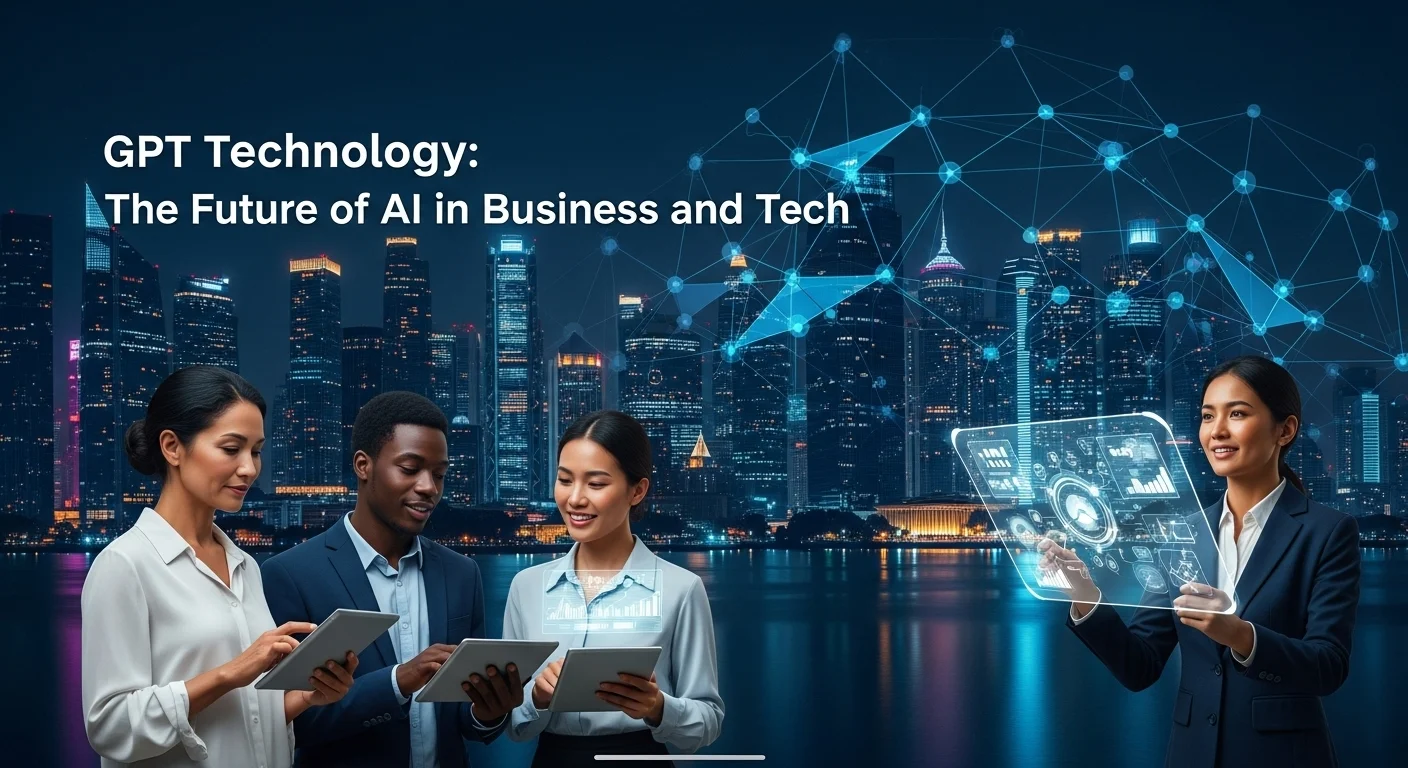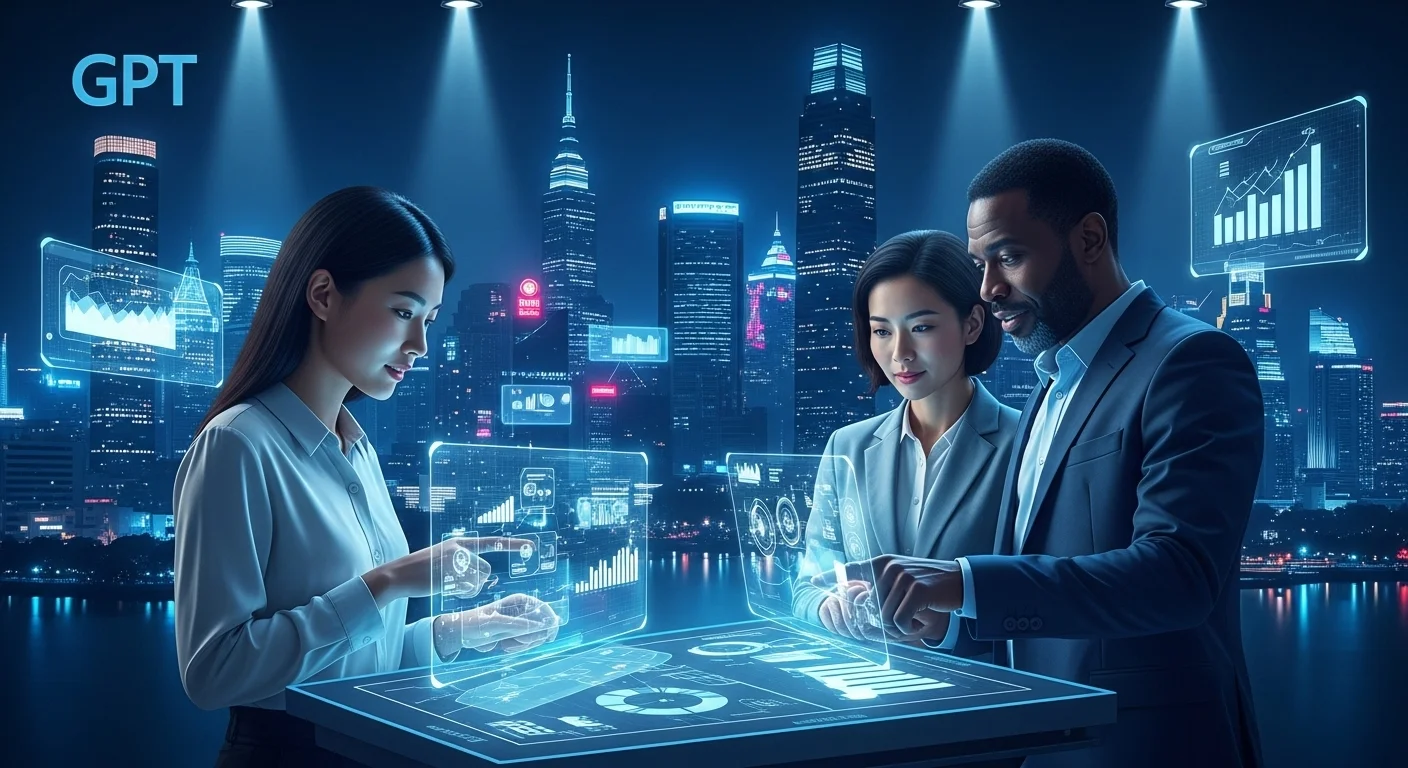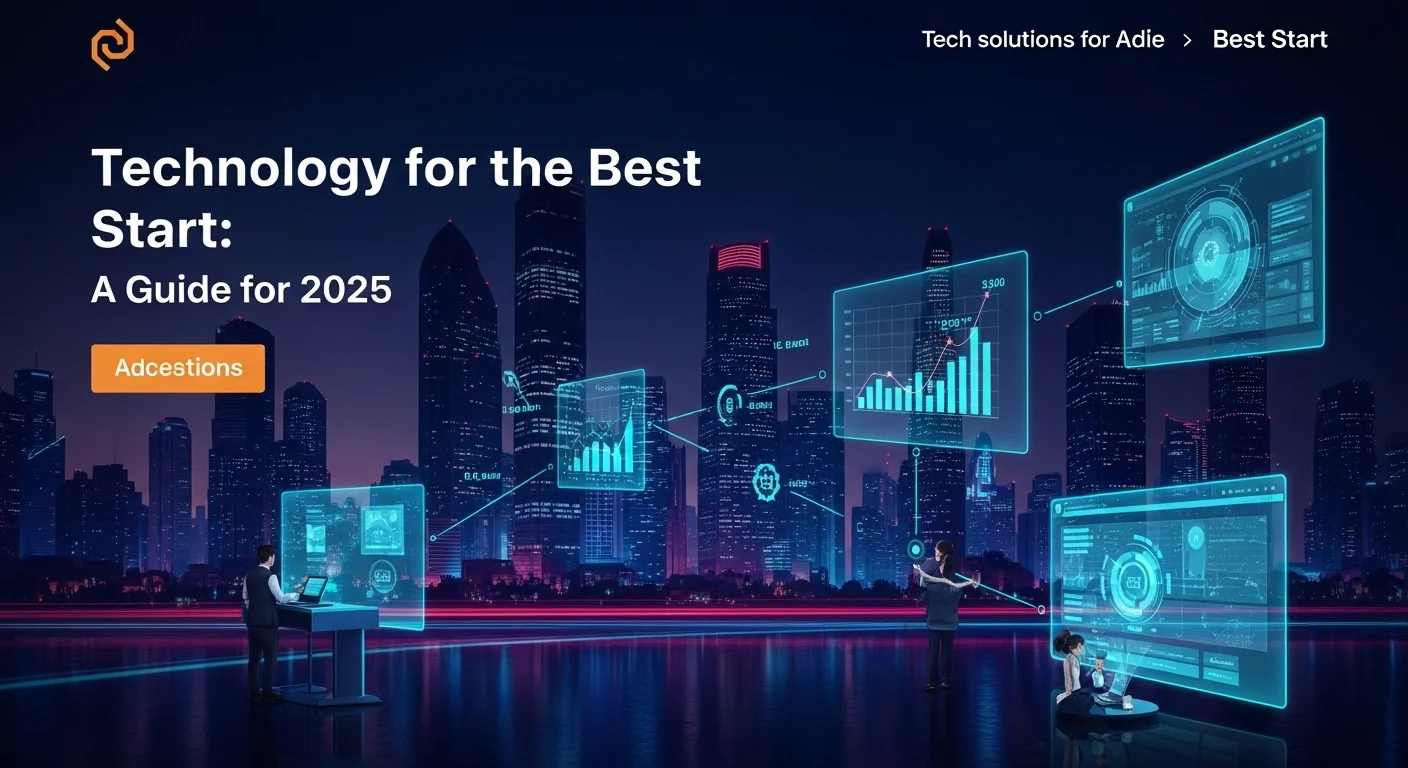GPT Technology Explained: A Real-World Guide to AI in Business

Executive Summary
I remember the first time I saw GPT-3 generate an entire marketing email from a two-sentence prompt. It wasn't just good; it was better than what a junior copywriter might produce. That's when I knew everything was about to change. Generative Pre-trained Transformer, or GPT, isn't just another tech acronym—it's the engine driving a massive shift in how we work and create. In this guide, I'll break down what GPT really is, how it evolved into powerhouses like ChatGPT 4, and show you real-world examples of how businesses are using it, especially with integrations like Microsoft's Copilot. Whether you're a business owner, an IT pro, or just fascinated by AI, understanding GPT is key to staying relevant. Let's dive into how you can harness this incredible technology.
Table of Contents
What is GPT and Why Does It Matter?
In the world of tech, we love our acronyms, but few have shaken things up quite like GPT. It stands for Generative Pre-trained Transformer, and it's a type of artificial intelligence that has changed our relationship with technology forever. Think of it as a massive language model that has read a significant portion of the internet and can now write, summarize, translate, and even reason about text in a way that feels incredibly human. This isn't just about cool chatbots; it's a fundamental shift in how we can solve problems and create content. I've seen companies across every industry use this tech for everything from generating creative marketing copy to analyzing thousands of customer reviews in minutes.
The Guts of the Machine: What Makes GPT Tick?
To really get why GPT is such a big deal, you have to look under the hood at its 'Transformer' architecture. Before this, AI models read text like we do, one word after another. The Transformer, a concept pioneered by Google researchers in 2017, can look at an entire sentence or paragraph at once. It uses something called a 'self-attention mechanism' to figure out which words are most important to each other, no matter where they are. This gives it a deep understanding of context, which is why its responses feel so coherent. The 'Pre-trained' part is just as crucial. Before we ever type a prompt, these models spend months learning from a colossal library of text and code. This intensive training gives them a vast foundation of knowledge about grammar, facts, and different writing styles, making versatile tools like ChatGPT 4 so knowledgeable on almost any topic.
A Rapid Evolution: The Journey to ChatGPT 4
The progress of GPT has been nothing short of breathtaking. I remember when OpenAI released the first version in 2018; it was promising but still felt like a science project. Then came GPT-2 in 2019, which was much larger and could write impressively coherent text. But the game truly changed with GPT-3 in 2020. With 175 billion parameters, it was a giant leap forward, able to perform tasks it was never explicitly trained for. Now, we have ChatGPT 4, which is another massive step up. It's 'multimodal,' meaning it can understand images as well as text. From my own use, it's far more accurate, makes fewer factual errors (what we call 'hallucinations'), and can follow much more complex instructions. This incredible growth shows that in the world of AI, the scale of the model and the quality of the data it learns from are everything.
Putting AI to Work: Real Business Applications
The real-world impact of GPT is most obvious in how businesses are using it. Companies are completely rethinking their operations. Customer service is a huge one. Instead of waiting on hold, customers can get instant, helpful answers from an AI-powered chatbot 24/7. This frees up human agents to handle the really tricky problems. Content creation has also been revolutionized. Marketing teams can now draft articles, social media posts, and personalized emails in a fraction of the time. This isn't just about speed; it’s about personalizing content for every single customer. The rise of accessible web-based tools has put this power into everyone's hands, not just big corporations. And the partnership between Microsoft and OpenAI has been a massive catalyst. By integrating GPT into tools like Azure and Microsoft 365 Copilot, they’ve brought this powerful AI to millions of office workers, cementing its role as a key piece of modern business technology.

A Complete Guide to Using GPT in Your Business
Getting your hands on GPT technology is one thing, but truly making it work for your business is another. To go from simply playing with an online chatbot to integrating this AI into your core operations, you need a strategy. This guide is my attempt to share what I've learned about leveraging these AI models for real, measurable business results. We'll explore the main techniques for customizing the AI, compare the different solutions out there, and outline practical steps for deploying them. Whether you're a startup or a global enterprise, the right approach to GPT can unlock a new level of efficiency and innovation.
Two Paths to Mastery: Fine-Tuning vs. Prompt Engineering
Out of the box, a model like ChatGPT 4 is a brilliant generalist. To turn it into a specialist for your business, you have two main options: fine-tuning and prompt engineering. Fine-tuning is like sending the AI to a specialized training course. You take the pre-trained model and train it a bit more, using your own company-specific data—like customer service chats or internal documents. This makes the AI an expert on your business, giving more accurate and contextually aware answers. It’s powerful, but it requires clean data and some technical know-how. Prompt engineering, on the other hand, is an art you can learn without any coding. It’s all about how you ask the question. Instead of a simple 'write a marketing email,' a great prompt looks more like: 'Act as a senior B2B marketer. Draft a punchy, 150-word email to a busy startup founder. Your goal is to get them to book a demo for our new cybersecurity tool. Focus on the benefit of automated threat detection and end with a clear call to action.' Learning how to craft prompts like this is the single most important skill for getting the most out of any GPT-based tool.
Finding Your Fit: Choosing the Right GPT Solution
The market for AI solutions is exploding, and picking the right one can feel overwhelming. The most well-known are OpenAI's own models, available through their API. ChatGPT 4 and its newer variations are the top of the line, offering incredible performance and the ability to process images, but they come at a higher cost. For simpler or high-volume tasks, older models like GPT-3.5-Turbo offer a great balance of speed and affordability. My advice is to match the model to the job. For complex creative work, go with the best. For simple classification, save your money. For businesses, the Microsoft partnership via the Azure OpenAI Service is a game-changer. It gives you access to OpenAI's models but wrapped in Microsoft's enterprise-grade security, privacy, and cloud services. It's the go-to for any company that handles sensitive data. Beyond OpenAI, there's a growing world of open-source models from companies like Meta (Llama) and Google (Gemma). These give you more control and can be run on your own servers, but they demand more technical expertise to manage. Your decision should come down to performance, cost, data privacy needs, and your team's technical skills.
From Theory to Practice: Integrating GPT into Your Daily Workflows
Truly integrating GPT means weaving it into the fabric of your business. Here are some of the most effective ways I've seen it done:
- Supercharge Customer Support: Set up a GPT chatbot to handle the first wave of customer questions instantly. It can answer FAQs, track orders, and only escalate to a human when a problem is too complex or the customer is getting frustrated.
- Fuel Your Marketing Engine: Use AI to brainstorm blog topics, write first drafts of articles, create dozens of ad variations for testing, and personalize email campaigns at scale. I've seen sales teams use it to get instant summaries of long email chains before a client call.
- Create an Internal 'Genius Bar': Build a search tool for your company's knowledge base. Employees can ask natural questions like, 'What's our travel reimbursement policy for international trips?' and get immediate, accurate answers instead of digging through old documents.
- Accelerate Innovation: Use ChatGPT 4 as a brainstorming partner. Ask it to analyze customer feedback to find common complaints, suggest new product features, or even help your developers write and debug code.
- Demystify Your Data: Feed the AI unstructured data like survey responses or market research reports and ask it to summarize the key takeaways, identify customer sentiment, and generate a clean report. It turns hours of manual work into minutes.

Tips and Strategies to Master Your GPT Experience
As AI like GPT becomes a part of our everyday digital toolkit, knowing how to 'talk' to it effectively is becoming a new kind of essential skill. It's like learning how to use a search engine properly, but with far more potential. Whether you're a professional trying to be more productive or a developer building the next big thing, mastering these AI tools can give you a serious edge. Here are some of my go-to tips, advanced strategies, and must-have tools for getting the absolute most out of platforms like ChatGPT 4.
The Art of the Prompt: Getting What You Want from AI
The quality of what you get out of an AI model is a direct reflection of the quality of what you put in. A vague question gets a vague answer. To get truly exceptional results, you need to be a good director. Here are my best practices:
- Be Specific and Add Context: Don't just ask for a 'blog post.' Ask for 'a 500-word blog post written in a witty, engaging tone for a target audience of millennial coffee lovers, focusing on the benefits of single-origin beans.' The more detail, the better.
- Give It a Role: I always start my prompts by giving the AI a persona. 'Act as a world-class financial analyst...' or 'You are a scriptwriter for a children's TV show.' This immediately puts the model in the right mindset, influencing its tone, vocabulary, and structure.
- Use Clear Formatting: When your request has multiple parts, like an instruction and a piece of text to analyze, separate them clearly. I often use triple quotes (""") or simple headings like 'INSTRUCTIONS:' and 'TEXT:'. This helps the model understand your request without getting confused.
- Show, Don't Just Tell: This is called 'few-shot prompting' and it's incredibly powerful. If you want a response in a specific format, give the model an example or two. Provide a sample input and your ideal output before giving it the real task. This is the fastest way to train it on what you want.
- Make It a Conversation: Don't give up if the first response isn't perfect. Refine your prompt. Give it feedback like, 'That's a good start, but make it more persuasive' or 'Could you rephrase that to be simpler for a non-technical audience?' Iterate until you get what you need.
Your AI Toolkit: Essential Tools and the Microsoft Ecosystem
For business use, graduating from the free online tools to integrated solutions is where the magic happens. The partnership between Microsoft and OpenAI has been pivotal here, embedding powerful AI directly into the software we use daily.
- Microsoft Copilot: Think of this as your AI assistant for the web and your Windows desktop. The business version is critical because it ensures your company's data stays private and isn't used to train public models. It's fantastic for summarizing long articles, drafting quick emails, or getting up-to-date answers from the internet.
- Microsoft 365 Copilot: This is the application that has the potential to change how we all work. It brings GPT-4's power into the entire Microsoft 365 suite. It can draft a report in Word, analyze data in Excel, build a presentation from a prompt in PowerPoint, and even summarize your Teams meetings with action items. It turns Office from a set of tools into an active assistant.
- Azure OpenAI Service: For developers and companies building their own AI-powered products, this is the gold standard. It provides access to OpenAI's models through Microsoft's secure cloud, ensuring your application is scalable and meets tough security and compliance requirements.
- Specialized Third-Party Tools: An entire ecosystem of apps has been built on top of GPT. AI writing assistants like Jasper, or customer service platforms like Intercom that use AI to power their bots, can provide a ready-made solution for a specific business need.
Using AI Wisely: Ethics and Responsibility
With great power comes great responsibility, and that's especially true for AI. As we embrace these tools, it's vital that we think about the ethical implications.
- Watch for Bias: These models learn from the internet, which is full of human biases. The AI can unknowingly perpetuate these stereotypes. It's our job to review AI-generated content to ensure it's fair, inclusive, and unbiased.
- Be Transparent: If a customer is talking to a chatbot, it's good practice to let them know. It manages expectations and builds trust.
- Protect Your Data: Never paste sensitive personal or company information into a free, public AI tool. Always use a secure, enterprise-grade service like those from Microsoft that contractually guarantees your data is kept private.
- Fact-Check Everything: Even the most advanced models like ChatGPT 4 can 'hallucinate'—which is a polite way of saying they make things up. Always verify any critical facts or data generated by an AI before you rely on it. Treat it as a brilliant but sometimes unreliable assistant.
By keeping these strategies and ethical considerations in mind, we can all leverage GPT's incredible power to drive innovation, work smarter, and create better technology for everyone. For those who want a deeper dive, I always recommend Andrej Karpathy's 'Let's build GPT' video on YouTube—it’s a masterclass in how these models actually work from the ground up.
Expert Reviews & Testimonials
Sarah Johnson, Business Owner ⭐⭐⭐
As a small business owner, the information on GPT was a good start. I would have loved to see a few more step-by-step examples for someone who isn't a tech whiz.
Mike Chen, IT Consultant ⭐⭐⭐⭐
Solid overview of GPT. As an IT consultant, it clarified how different models fit into the business world. A simpler explanation of the Transformer architecture would make it perfect.
Emma Davis, Tech Expert ⭐⭐⭐⭐⭐
An absolutely fantastic and comprehensive guide to GPT! This was incredibly helpful for my specialization work. Everything was explained perfectly and was easy to follow.



